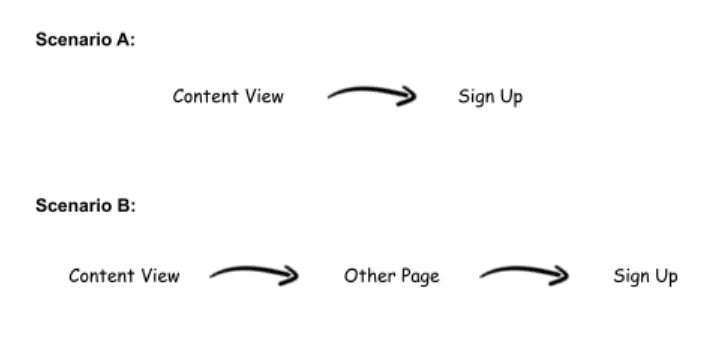Measuring influenced pipeline for B2B content - the true conversion metric
Identifying what content influences your pipeline - why should you care?
Identifying what content influences your pipeline is an essential part in understanding your audience, and improving your content marketing strategy. Doing this will:
- Allow you to know what is working and what is not.
Iterate and double down on the content that influences your business goals, while improving things that do not contribute. - Give you an actual snapshot of the topics with more demand among readers that turn into leads, allowing you to understand and predict which topics are trending and which are not.
- Make predicting your audience’s behavior easier and helps you craft more interesting and predictable content marketing and user acquisition strategies.
Measuring influenced pipeline for B2B content - the true conversion metric
When measuring content effectiveness, the standard is to consider two scenarios:

In both scenarios, readers go from content to sign up in the same session. In Scenario A, readers convert directly after the content view, whereas Scenario B readers view other pages in the same session before signing up.
Scenario A is what you typically measure when considering conversions and conversion rate of your content.
In Scenario B the conversion rate becomes non-straightforward as we specifically need to take into account conversions that happen later in the session.
However, both Scenario A and B require sign ups to happen in the same session where the content was viewed. This is a huge requirement, especially in B2B, where buying cycles usually happen over a longer period of time and the effect is therefore significantly delayed compared to the view of the content.
A common scenario in a B2B context will experience sign ups and later pipeline steps happening at a much later time (days, weeks or even months) compared to the content view.

As illustrated in the bottom of Scenario C, we need to keep measuring until later pipeline stages to get the full picture of how our content influences all pipeline stages.
Sign up conversions is a good initial measure, but ultimately you want to know how your content affects the rest of the pipeline as well.
Some content will be driving early leads and some will help push leads towards a sale.
Finally, a B2B scenario should also keep track of multiple stakeholders, as illustrated in Scenario D

Moving from page conversion rates to consider the influenced pipeline, gives you a more complete picture on how the content is affecting the revenue generation process.
In addition to what is captured by the conversion rate, measuring the influenced pipeline allows you to further capture...
- … the effect of content that is not directly in the same session as a sign up, i.e. the true influence of your content.
- … the influence on the entire pipeline i.e. MQL, SQL, NewBiz etc., and not just the sign up event.
- … multi-stakeholder journeys, where more stakeholders from the same account are engaging with your content at different times.

